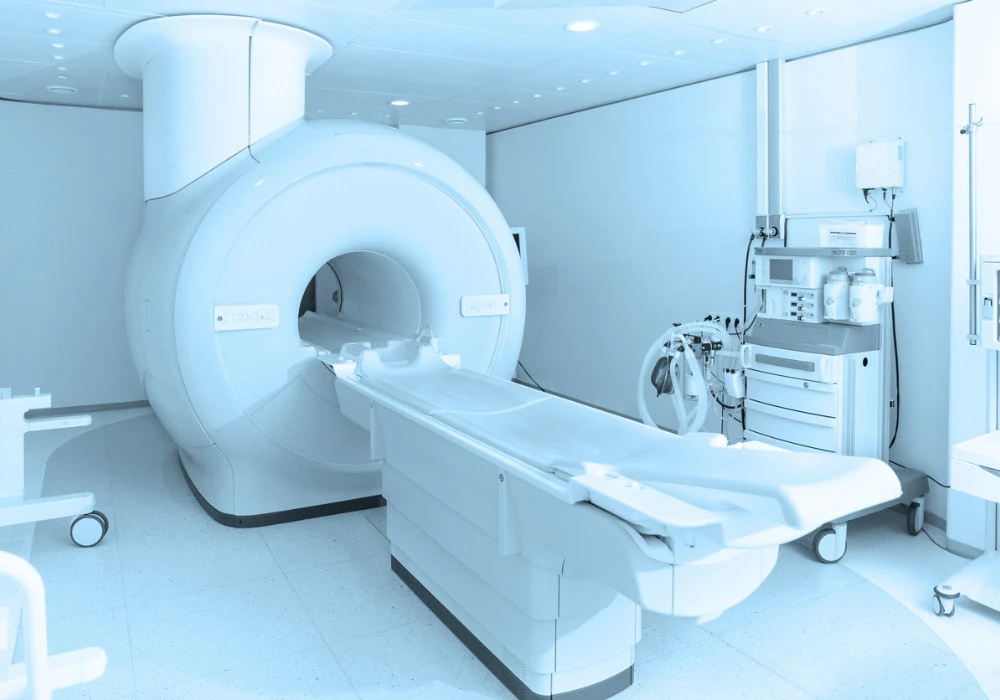Magnetic resonance imaging is central to diagnosis across many specialties yet many patients still struggle to reach a scanner. Costs, building needs and day-to-day operations limit where systems can be installed, so availability varies widely by country and between urban and rural areas. Improving access means matching field strength, location, safety and workflow to local needs. New low-field options, renewed interest in mid-field platforms and efforts to expand 1.5-T capacity offer practical ways to grow services. The aim is not only to add more scanners but to choose the right type for places that lack general-use capability, supporting broad clinical use with reliable and sustainable service.
Low-Field Innovation and Its Limits
Work on low-field systems has focused on radically reducing hardware costs and expanding portability. Head-only permanent magnets and ultra-low-field whole-body prototypes illustrate how locally defined needs can shape design, enabling follow-up of conditions such as paediatric hydrocephalus without requiring high spatial resolution or signal-to-noise ratio. A parallel agenda emphasises clinician confidence, open-source approaches, context-specific artificial intelligence tools for low- and middle-income countries and sustainable financing, aiming to make low-field imaging viable at scale. These efforts broaden the usable magnetic spectrum and invite new use cases tuned to resource-constrained environments.
Must Read: Improving Speed and Quality in Head and Neck MRI with DL
At the same time, limitations are explicit. Very low-field platforms, while valuable for screening diffuse disease or triage, do not yet match the spatial resolution needed for small focal pathologies across multiple body regions and therefore risk delivering a tier of access different from standard clinical practice. In some settings this has been characterised as a stopgap that may not advance health equity when systems cannot handle routine brain, spine, body and musculoskeletal examinations at customary diagnostic quality. In practice, low-field devices may best serve as gateways that identify patients who require advanced imaging rather than substitutes for comprehensive general-use scanners.
Mid-Field as a General-Use Platform
Mid-field systems in the 0.1–1.0 T range are re-emerging as versatile workhorses designed to widen access while covering routine clinical needs. Manufacturers have demonstrated platforms at approximately 0.5–0.6 T, and installations now number in the hundreds across the world. Key attributes include reduced installation requirements, a lower total cost of ownership compared with 1.5-T and application portfolios spanning common examinations. Indicative purchase costs reflect the stratification by field strength: approximately €68,000–€512,000 for systems below 0.1 T, €256,000–€597,000 for mid-field and greater than €850,000 for 1.5-T, with helium boil-off largely eliminated in modern designs though with increased power consumption to consider.
Safety parameters remain comparable to higher-field environments, particularly with respect to projectile risks, underscoring the need for rigorous protocols wherever scanners are sited. Early clinical experience with mid-field platforms has reported preserved diagnostic capabilities in brain, spine, knee and abdominal imaging when combined with cost-conscious gradients and receiver arrays, despite opportunities to refine image quality further. For radiologists in both low- and high-income contexts, the central concern is whether the system consistently supports key diagnoses. Initial reports indicate that mid-field configurations can meet this bar while offering a more attainable path to deployment.
A rural implementation provides an operational template. A 0.55-T, 60-cm bore scanner was installed in a relocatable container unit to overcome space and construction barriers, with diesel generation and uninterruptible power supplies stabilising uptime during frequent outages. Automatic ramp-down protected the magnet during longer interruptions, with controlled re-ramp on power return. Two radiographers without prior MRI experience were trained over one week, aided by scan-assistance tools that simplified operation across varied cases. Protocoling, monitoring and reporting were performed remotely, and scans were provided to referred patients.
Operational Lessons and the Role of 1.5 T
Early utilisation data from the rural site underline how proximity changes access. Among 413 patients, image quality was rated good in 98 percent and average in 2 percent. Around one in ten respondents indicated they would not have obtained or might not have obtained the examination without on-site availability. For the remainder, the alternative would have been referral elsewhere at a price that is material in the local context, where non-contrast scans can cost €48–€68 against an average monthly family income near €164. The experience suggests that mid-field systems, paired with remote expertise and resilient infrastructure, can close practical gaps that previously kept patients from imaging altogether.
Expanding access also intersects with market dynamics at 1.5 T. New manufacturers have entered the field in several countries, and national programmes aim to develop home-grown whole-body magnets, though commercial availability remains limited in some cases. The use of refurbished higher-field equipment raises persistent concerns where devices past service life become unusable and difficult to dispose of, creating equipment backlogs that undermine service goals. For accessibility initiatives, the priority is clinically compliant equipment, supportable over time and matched with local service models.
Positioning higher-field systems above 1.5 T within this landscape highlights differing roles. While 3-T scanners retain importance for selected clinical applications and research, they are less central to the immediate challenge of broadening equitable access. Concentrating such systems in major centres, while scaling general-use 0.5–1.5 T capacity where imaging is presently scarce, aligns field strength to use case and supports a tiered network in which patients can be triaged appropriately.
A practical route to equitable MRI lies in deploying general-use magnets between 0.5 and 1.5 T with workflows, safety training and maintenance tailored to local conditions. Low-field innovation can extend reach and triage, but mid-field platforms are emerging as the most versatile option for routine diagnostics where scanner density is low. Experience from a rural programme demonstrates that containerised siting, power resilience, short operator training supported by scan assistance and remote radiologist oversight can translate into usable, affordable access without compromising essential image quality. Aligning procurement, regulation, service pathways and community engagement around such models offers a credible framework to close gaps in availability while preserving clinical breadth.
Source: Radiology
Image Credit: iStock







